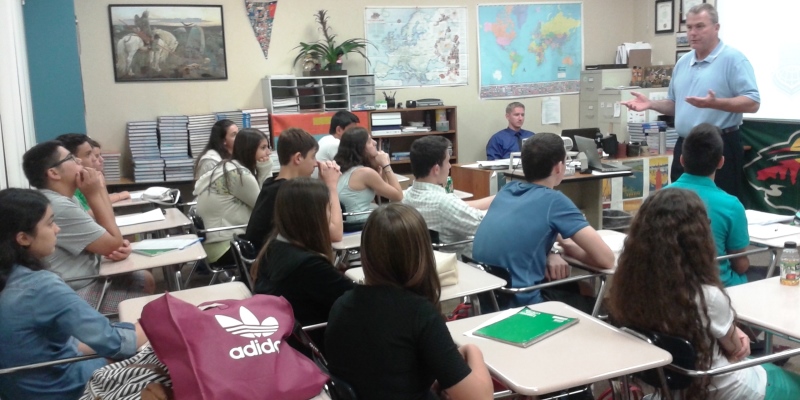Alberta government should increase access to for-profit schools

As parents across Alberta express increasing concern about the state of K-12 education, the possibility for real education reform—including greater access to independent schools for more Alberta families—has increased regardless of the provincial election outcome in the spring.
There’s a large and growing body of research showing the benefits of school choice for students and families. A recent comparison of standardized test results in British Columbia between public schools and non-elite independent schools (the analysis excluded high tuition or “elite” independent schools) showed that independent schools had better results (statistically significant, in fact) than comparable public schools in 10 out of 11 test areas.
The case for school choice is an easy one in the province, which has long prided itself on trying to maximize choice for parents and students. Alberta is, for instance, the only Canadian province with charter schools, which provide greater diversity, choice and autonomy within the public school system. Alberta is also one of the most generous provinces in supporting parents that choose to homeschool their children.
Alberta also has one of the highest rates of subsidies to families choosing independent schools. Specifically, qualifying independent schools receive either 60 or 70 per cent of the equivalent per student operating funds public schools receive.
And yet, despite the generous subsidies, Alberta’s rate of independent school enrolment (4.4 per cent) is less than B.C. (12.9 per cent), Quebec (12.3 per cent) and Manitoba (7.9 per cent). Alberta also falls below Ontario (6.1 per cent), which provides no funding to families choosing independent schools.
A commonly noted barrier to more independent schools is the cost of construction and/or expansion of existing facilities. Independent schools receive no funding from government for such costs.
One potential (but not obvious) solution, which has proven successful in Sweden, is to make for-profit schools eligible for government operating grants in the same way as non-profit independent schools, which serve to lower tuition rates to families. For-profit schools can access financing that’s simply not available to non-profits—financing that can fund construction and other costs related to expanding the supply of independent schools.
Current legislation in Alberta, and indeed all Canadians provinces, excludes for-profit independent schools from receiving government operating grants—even if they follow all other school regulations—which severely limits their ability to participate in the province’s education system, since it requires high rates of tuition.
By incorporating for-profits into the mix of education delivery on a level playing field, Sweden has experienced an explosion in such providers. Swedish students attending independent schools increased from 2 per cent in 1992 when reforms began, to 14.1 per cent in elementary and lower-secondary grades and 25.1 per cent in upper-secondary grades by 2014. Indeed, the majority of Swedish students attending independent schools are enrolled in a for-profit.
Another potential reform to make independent schools more accessible comes from Australia, which is experimenting with varying values for school vouchers. The idea is to better target support to families in need, to ensure greater school choice for lower-income Australian families. Alberta could follow suit by raising the value of the independent school grant to 90 per cent (an increase from the current 60 or 70 per cent) for lower-income families, making more independent schools accessible to more Alberta families.
Independent schools, and the greater choice they provide parents, have proven successful in other provinces and countries. Alberta has an opportunity to make independent schooling more accessible to more Alberta families, which has the potential to improve education in the province.
Authors:
Subscribe to the Fraser Institute
Get the latest news from the Fraser Institute on the latest research studies, news and events.


